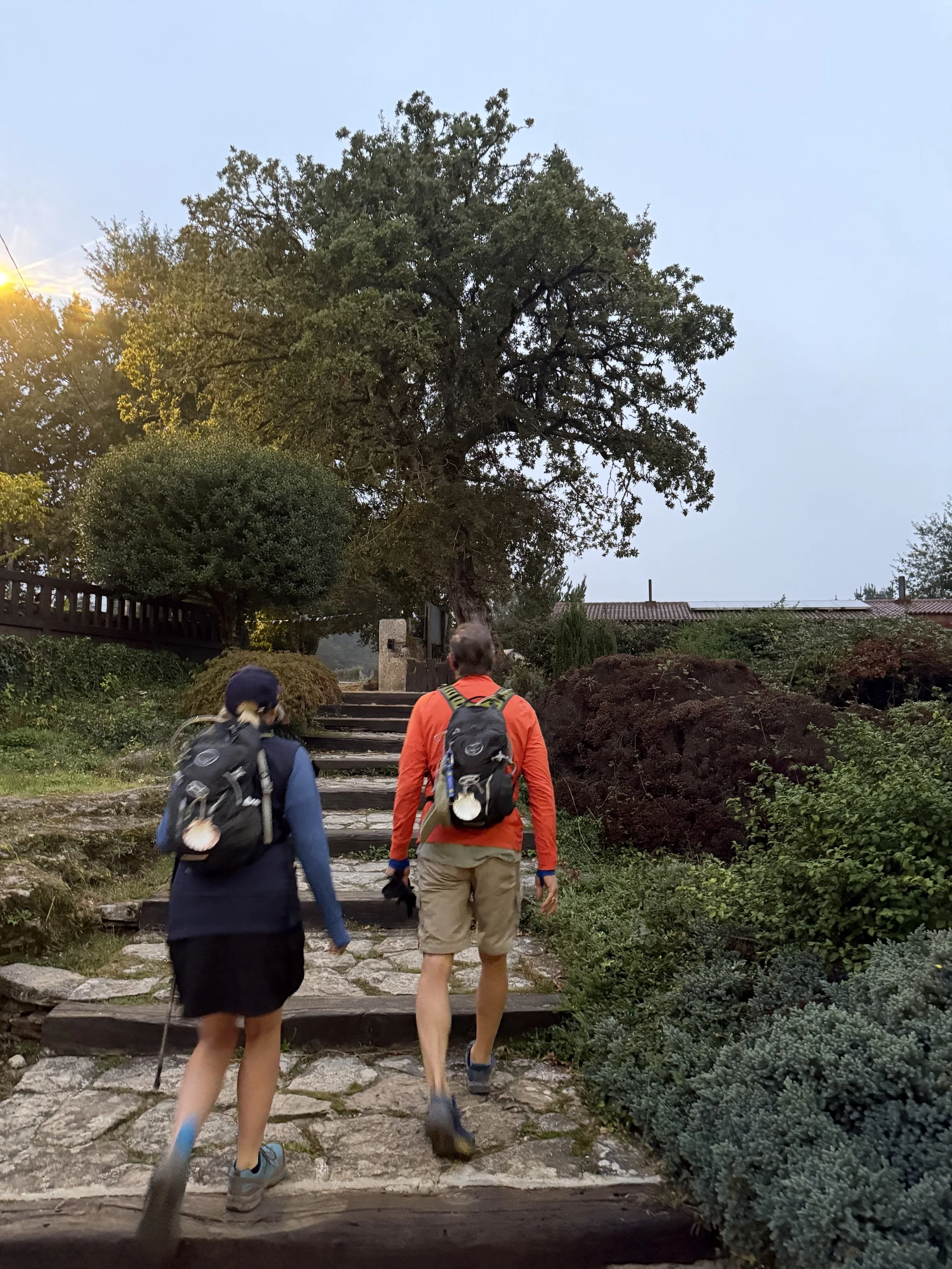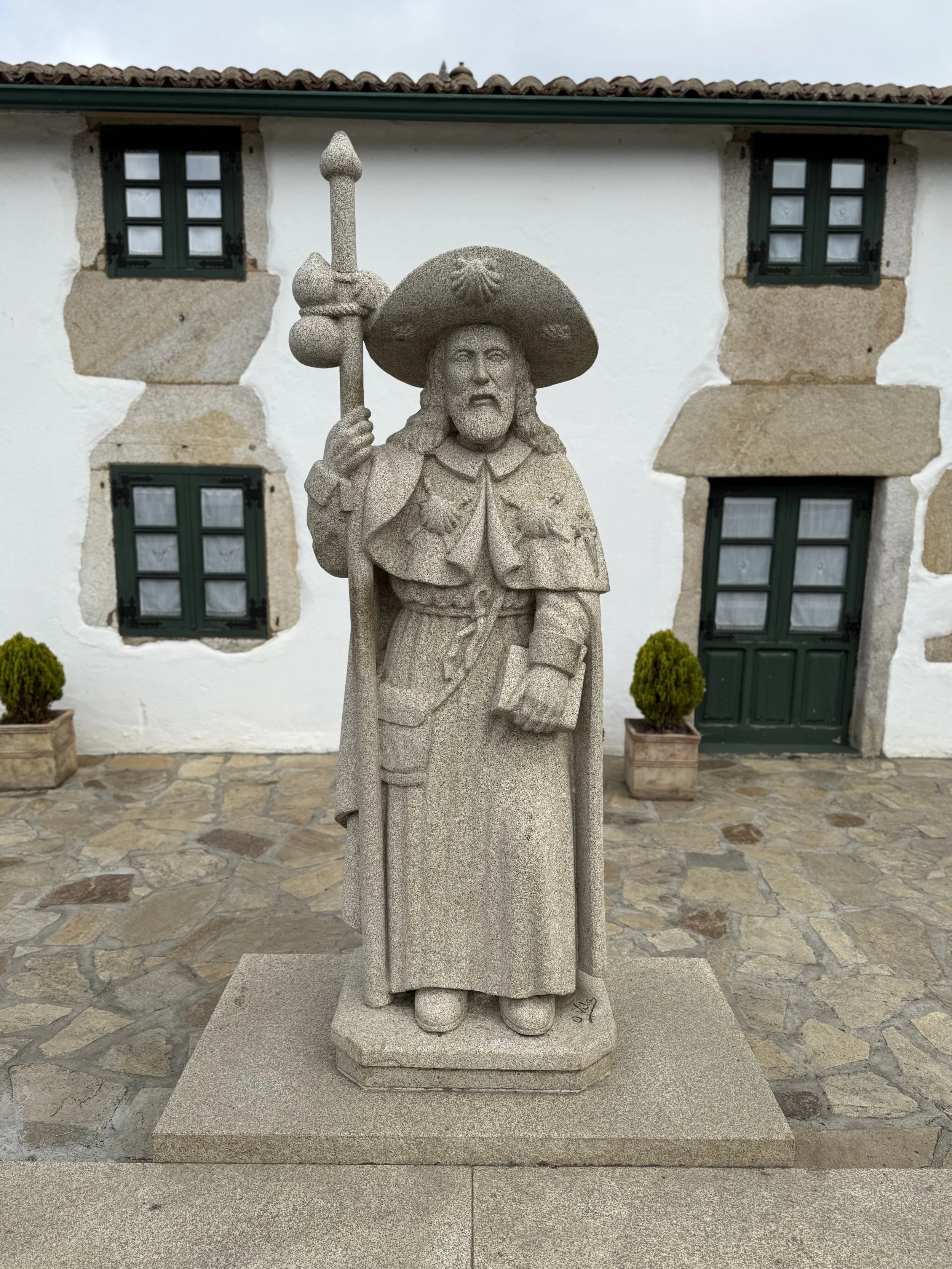How Much Does It Cost to Walk the Camino de Santiago?
Walking the Camino de Santiago is a life-changing journey filled with beauty, connection, and discovery. But before you lace up your hiking boots and hit the trail, there’s one practical question every pilgrim asks:
“How much does it cost to walk the Camino?”
When I first started planning my Camino, I was surprised by how varied the answers were. Some pilgrims seemed to do it on a shoestring budget, while others spent thousands of dollars. The truth is, your Camino cost depends on your style of travel—from where you stay to what you eat and how much comfort you prefer.
In this guide, I’ll share my own experience and a detailed breakdown of typical expenses to help you plan your dream pilgrimage.
The Main Factors That Affect Your Camino Budget
Before we dive into the numbers, it’s helpful to understand what impacts the total cost of your journey.
Route Chosen – The Camino Francés is the most popular, but routes like the Camino Portugués or Camino del Norte may have different costs due to availability of services and length.
Travel Style – Rustic and simple or more comfortable and private accommodations.
Season – Summer tends to be more expensive and crowded, while spring and fall offer better prices.
Length of Time – The number of days you spend walking dramatically affects food, lodging, and other daily expenses.
Gear & Preparation – Initial costs like buying hiking shoes, backpacks, and clothing.
Rugged terrain along the Camino de Santiago
Typical Daily Costs on the Camino
On average, pilgrims can expect to spend €35–€60+ per day depending on their travel style. Here’s a breakdown of what that looks like:
Accommodation
There are three main options for lodging on the Camino:
Municipal Albergues: €8–€12 per night
Basic dormitory-style hostels for pilgrims.
First-come, first-served beds with communal bathrooms.
Great for budget travelers and meeting fellow pilgrims.
Private Albergues: €12–€18 per night
Slightly more comfortable, with extras like laundry service or private showers.
Hotels or Private Rooms: €40–€90+ per night
Ideal if you want more privacy or are taking a rest day.
Tip: Book private rooms ahead of time during peak summer months to avoid being stranded without a bed.
Related post: Best Places to Stay on the Camino de Santiago: Albergues, Hotels, and More
Food and Drinks
Spain is known for its delicious and affordable cuisine!
Breakfast: €3–€5
Typical breakfast: coffee, toast, or pastry.
Lunch: €5–€10
Bocadillo (sandwich), fruit, or snacks.
Dinner: €12–€15
The Pilgrim Menu (Menú del Peregrino) usually includes three courses, bread, wine or water.
Total daily food budget: €20–€30+
If you enjoy tapas or wine in the evenings, add another €5–€10+.
Related post: How to Eat Healthy While Walking the Camino: Nutrition Tips for Pilgrims
Laundry
Most albergues have coin-operated washing machines and dryers:
€4–€6 per load, or hand wash your clothes and hang them to dry for free.
Some country house and hotels will do laundry for you for a small a small fee.Personal experience: We stayed in a nicer hotel for one of our rest days, we asked them to do our laundry-it cost us a fortune! Ask the price first.
Miscellaneous Costs
Snacks & bottled water: €2–€5 per day (though tap water is safe and free to refill).
Pharmacy or first aid supplies: €5–€20 throughout your trip.
Souvenirs or stamps for your Credencial (pilgrim passport): €1–€3 each.
Luggage transfers (optional): €5–€7 per stage if you prefer not to carry a heavy backpack.
Sangria- a Spanish specialty.
One-Time Pre-Camino Expenses
Before you even set foot on the trail, there are approximate initial costs to consider.
Flights to Spain
From the U.S.: $800–$1,400 round trip
From Europe: €50–€250, depending on distance and airline deals.
Gear
Quality gear will keep you comfortable and prevent injuries. Approximate prices:
Hiking shoes or trail runners: €100–€150
Backpack: €80–€120
Quick-dry clothing: €100–€200 total
Trekking poles: €30–€50
Related post: The Complete Packing List for the Camino de Santiago (What You Really Need)
Get Your Gifts and Gear Here
Travel Insurance
Highly recommended in case of medical issues or unexpected changes.
Expect to spend €50–€100, depending on coverage length and provider.
Heading out for the day.
Sample Budget for a 30-Day Camino Francés
Category Budget Traveler (€) Comfort Traveler (€)
Accommodation 300 900
Food & Drinks 600 900
Laundry & Miscellaneous 150 250
Total Daily Costs 1,050 2,050
Flights & Insurance 900 900
Gear & Preparation 400 400+
Grand Total 2,350 3,350+
Costs are approximate
Tips for Saving Money on the Camino
Stay in municipal albergues as often as possible.
Refill water bottles at fountains instead of buying bottled water.
Shop at local markets for picnic lunches instead of eating at restaurants every day.
Hand wash laundry to avoid machine fees.
Travel during shoulder season (spring or fall) for lower prices and fewer crowds.
Share gear or split costs with a walking partner when possible.
Related post: Managing Altitude Changes on the Camino: Breathing and Lung Health Tips
Get Your Gifts and Gear Here
Budgeting for Comfort vs. Simplicity
Your Camino can be as simple or as comfortable as you choose.
Budget Camino:
Stay in municipal albergues, prepare your own food, carry your backpack, and keep extras to a minimum.Comfort Camino:
Book private rooms, eat out regularly, and use luggage transfer services.
Both approaches are valid—the important thing is to choose what supports your health and joy during the journey.
Pilgrim Statue along the Camino de Santiago
My Personal Experience
Some of my friends and family, tried to stay as frugal as possible, sleeping in municipal albergues and eating simple meals. It was an incredible experience, full of connection and adventure.
Some of them, splurged on a few private rooms and enjoyed long, leisurely dinners. Both Caminos were meaningful, but in very different ways.
I did a mixture of both and I enjoyed every minute of the experience.
That’s the beauty of this pilgrimage—you can tailor it to fit your needs and budget.
FOLLOW THE CAMINO CHRONICLES
FACEBOOK: THE CAMINO CHRONICLES
Conclusion: Plan Your Camino with Confidence
Walking the Camino de Santiago is more affordable than many long-distance adventures, and with thoughtful planning, you can create a journey that fits your budget and comfort level.
Whether you’re counting every euro or ready to indulge a little, the memories you create will be priceless.
For more Camino planning resources, check out:
Training for the Camino de Santiago: A 12-Week Walking Plan
How to Eat Healthy While Walking the Camino: Nutrition Tips for Pilgrims
Camino Foot Care: Preventing Blisters & Injuries for a Comfortable Pilgrimage
And don’t forget to follow @Camino.Chronicles on Instagram for inspiration, tips, and stories from the trail.
Buen Camino, my friend! May every step of your journey be filled with purpose and joy.
Renae



